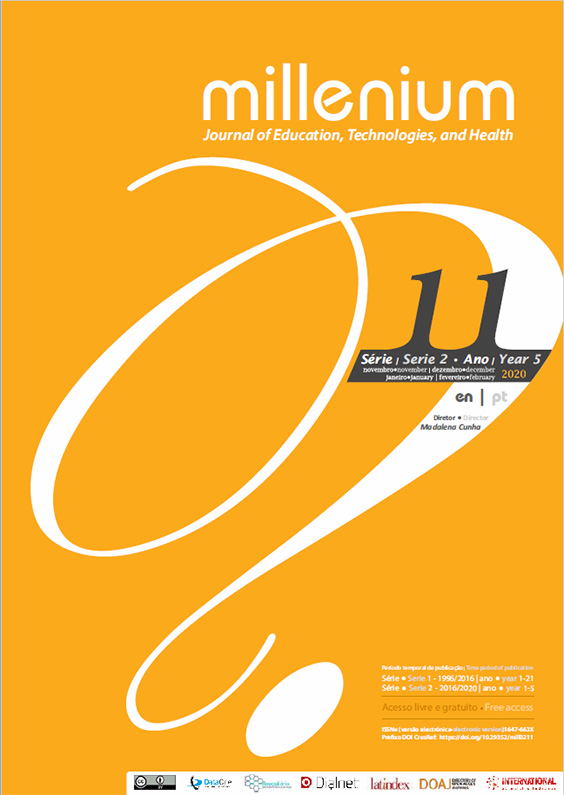Great-grandparents and great-grandchildren – told stories and lived stories
DOI:
https://doi.org/10.29352/mill0211.04.00276Keywords:
Great-grandparents, Great-grandchildren, Intergenerational relationship, FamilyAbstract
Introduction: Due to new parameters of longevity in the world and in Brazil, the presence of great-grandparents in the family is becoming increasingly widespread nowadays.
Objectives: Understand the role of great-grandparents in their relationship with their great-grandchildren.
Methods: We opted for a qualitative research, using semi-directed interviews with great-grandparents and their great-grandchildren. In addition, five books of children's literature were read focusing on the figure of great-grandparents. The collected data were then triangulated looking to a better understanding of the phenomenon to be studied. The study participants were five great-grandparents, male and female, aged 74 to 97 years, five great-grandchildren, aged between 7 and 10 years.
Results: The results point to a special status of great-grandparents in the lives of their great-grandchildren, presented through a relationship of affection; however, there are generational tensions that can be resignified through dialogue and coexistence between generations.
Conclusions: It is concluded that the relationship between great-grandparents and great-grandchildren is appreciated by both generations, despite the great age disparity.
Downloads
References
Andolfi, M. (2017). Multi-generational family therapy: tools and resources for the therapist. New York: Routledge.
Belinky, T. (2005). Bisaliques, eta bisa boa! São Paulo: Editora Paulus.
Campos, C. L. (2018). A bisa fala cada coisa! São Paulo: Panda Books.
Dias, C. M. S. B., Azambuja, R., Rabinovich, E., & Bastos, A. C. (2018). Grandparents in Brazil: The contexts of care and economic support for grandchildren. In D. W. Schwalb, & Z. Hossain (Eds.), Grandparents in cultural context (pp. 60-79). Nova Iorque: Routledge.
Even-Zohar, A., & Garby, A. (2016). Great-grandparents' role perception and its contribution to their quality of life. Journal of Intergenerational Relationships, 14(3), 197-219.
Grünheid, E., & Scharein, M. G. (2011). On developments in the mean joint lifetimes of three and four generations families in western and eastern Germany: a model calculation. Comparative Population Studies, 3(1), 3-40.
IBGE – Instituto Brasileiro de Geografia e Estatística (2017). Censo demográfico. Acedido em www.Ibge.gov.br
Kniegge, A. (2016). Beyond the parental generation: The influence of grandfathers and great-grandfathers in status attainment. Demography: DOI 10.1007/s13524-016-0486-6.
Mahne, K., Klaus, D., & Engstler, H. (2018). Grandparenthood in Germany: Intimacy at a distance or emeritus parents? In. D. W. Schwalb, & Z. Hossain (Eds.), Grandparents in cultural context (pp.83-110). Nova Iorque: Routledge.
Minayo, M. C. (2019a). O desafio do conhecimento: pesquisa qualitativa em saúde. São Paulo: Hucitec.
Minayo, M. C. (2019b). The imperative of caring for the dependent elderly person. Ciência e Saúde coletiva, 24(1), DOI: http://dx.doi.org/10.1590/1413-81232018241.29912018.
Organização das Nações Unidas. (2018). Desenvolvimento Sustentável. Acedido em https://nacoesunidas.org.
Rabinovich, E. P., Azambuja, R. M. M., & Moreira, L. V. C. (2014). O significado de bisavós para crianças baianas. Revista Temática Kairós Gerontologia, 17(1), 179-199.
Rabinovich, E. P., & Azambuja, R. M. M. (2017). Reconfigurando a imagem de avós na literatura infantil brasileira contemporânea. In L. Moreira, E. Rabinovich & C. Brito Dias (Eds.), A voz dos avós: família e sociedade (pp.93-110). Curitiba: Editora CRV.
Ramos, N. (2012). Avós e netos através das imagens e das culturas. In M. Ramos, M. Marujo, & A. Baptista (Eds.), A voz dos avós: migração, memória e patrimônio cultural (pp. 33-56). Coimbra: Gráfica de Coimbra.
Ribeiro, N. (2014). O bule de chá da bisa Marieta. São Paulo: Editora Roda e cia.
Ribeiro, N. (2013). No tempo dos meus bisavós. São Paulo: Editora do Brasil.
Silva, C. F. S. (2019). Relacionamento Intergeracional entre idosos e adultos jovens: uma revisão sistemática (2008-2018). In E. P. Rabinovich, L. V. Moreira, E. S. Brito, & M. M. Ferreira (Eds.), Envelhecimento & Intergeracionalidade: olhares interdisciplinares (pp. 393-416). Curitiba: Editora CRV.
Schuler, E., & Dias, C.M. (2019). Entre ficção e realidade - A relação intergeracional entre bisavós e bisnetos. Atas - Investigação qualitativa em saúde, 1(2), 499-508.
Wentowski, G. (1985). Older women's perception of great-grandparenthood: a research note. The Gerontologist, 25(6), 593-596.
Walsh, F. (2016). Diversidade e complexidade nas famílias do século XXI. In F. Walsh (Ed.), Processos normativos da família. São Paulo: Artmed.
Zatz, S. (2015). Meu bisavô. São Paulo: Editora Terceiro Nome.
Downloads
Published
How to Cite
Issue
Section
License
Copyright (c) 2020 Millenium - Journal of Education, Technologies, and Health

This work is licensed under a Creative Commons Attribution 4.0 International License.
Authors who submit proposals for this journal agree to the following terms:
a) Articles are published under the Licença Creative Commons (CC BY 4.0), in full open-access, without any cost or fees of any kind to the author or the reader;
b) The authors retain copyright and grant the journal right of first publication, allowing the free sharing of work, provided it is correctly attributed the authorship and initial publication in this journal;
c) The authors are permitted to take on additional contracts separately for non-exclusive distribution of the version of the work published in this journal (eg, post it to an institutional repository or as a book), with an acknowledgment of its initial publication in this journal;
d) Authors are permitted and encouraged to publish and distribute their work online (eg, in institutional repositories or on their website) as it can lead to productive exchanges, as well as increase the impact and citation of published work
Documents required for submission
Article template (Editable format)





